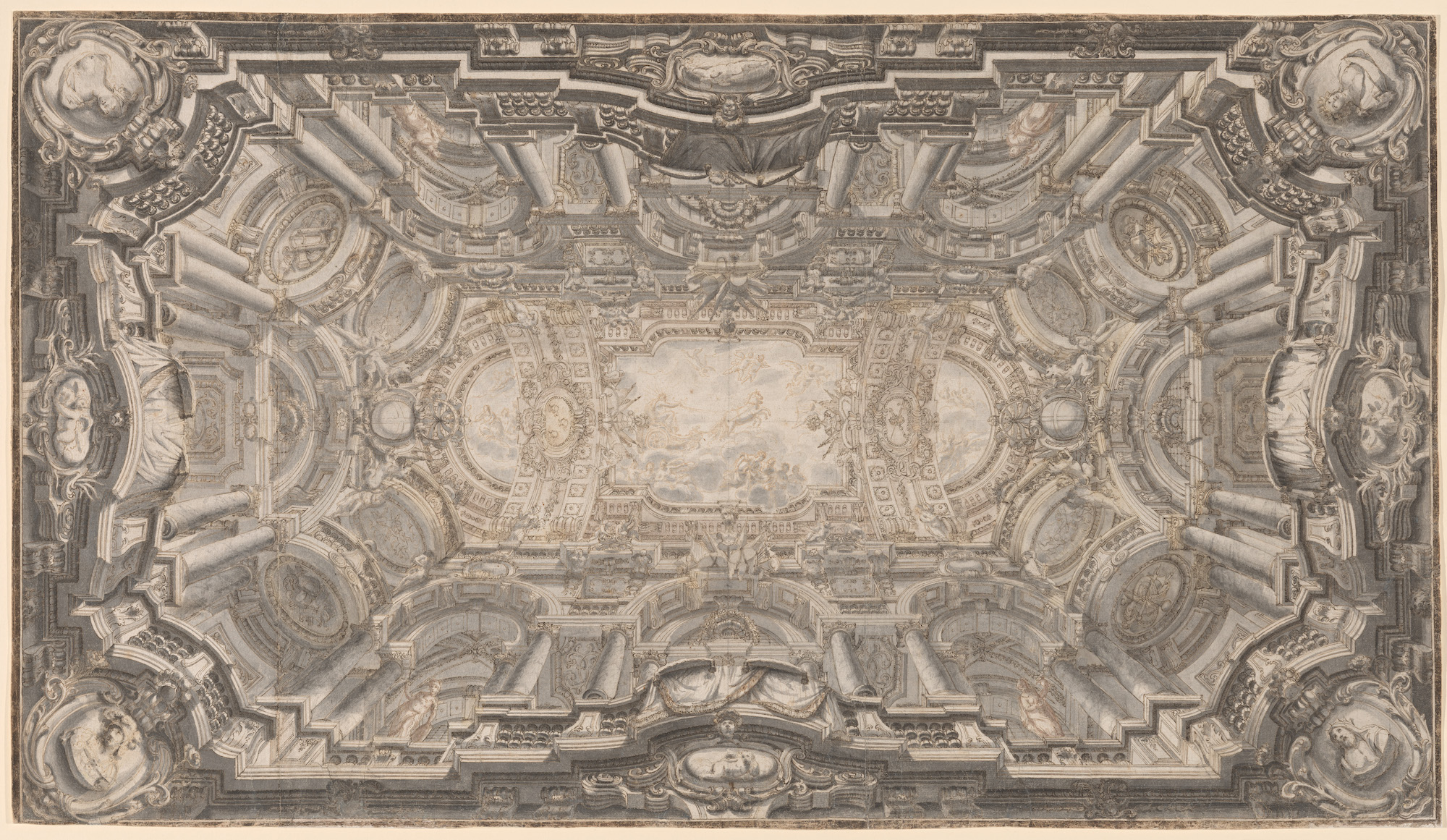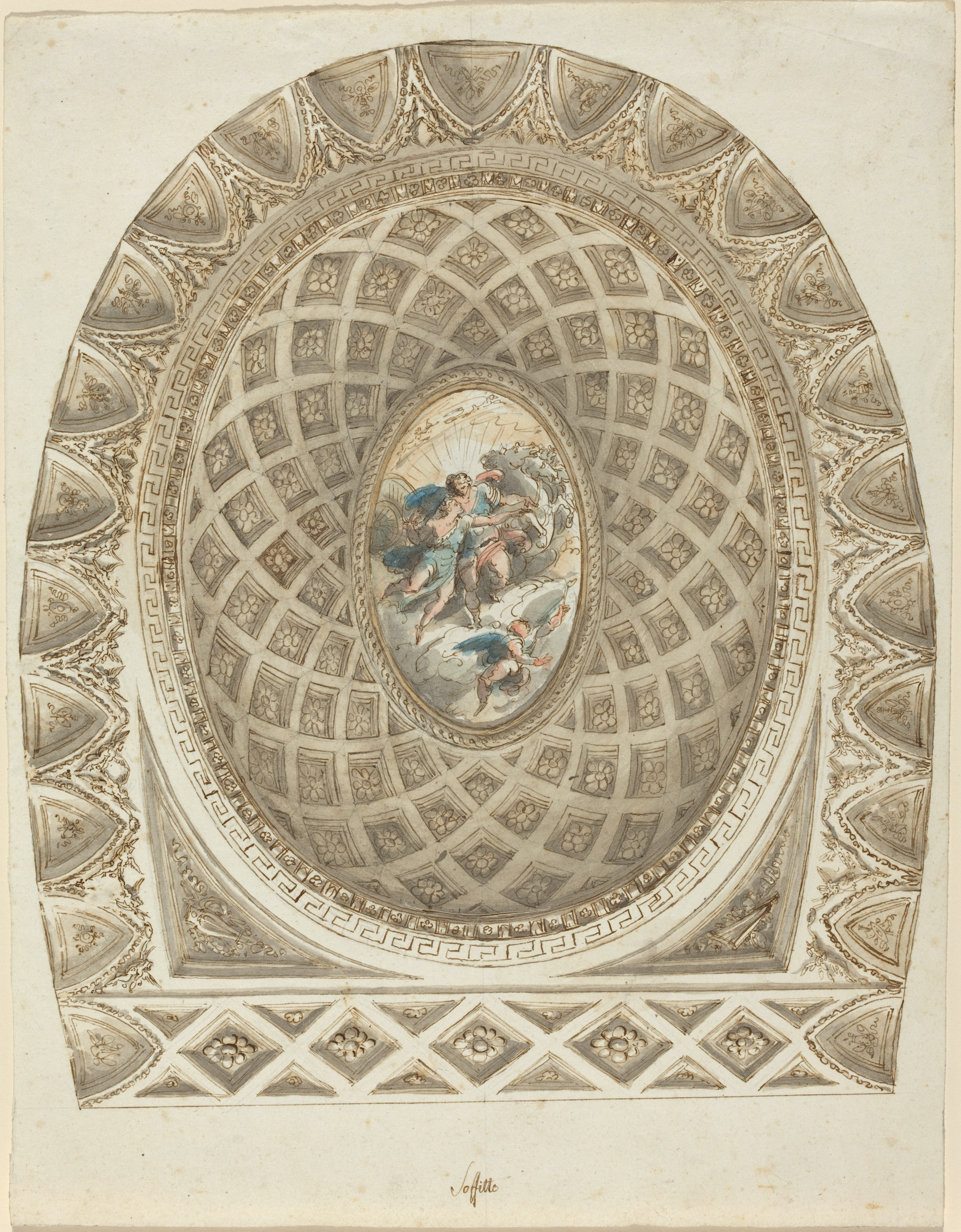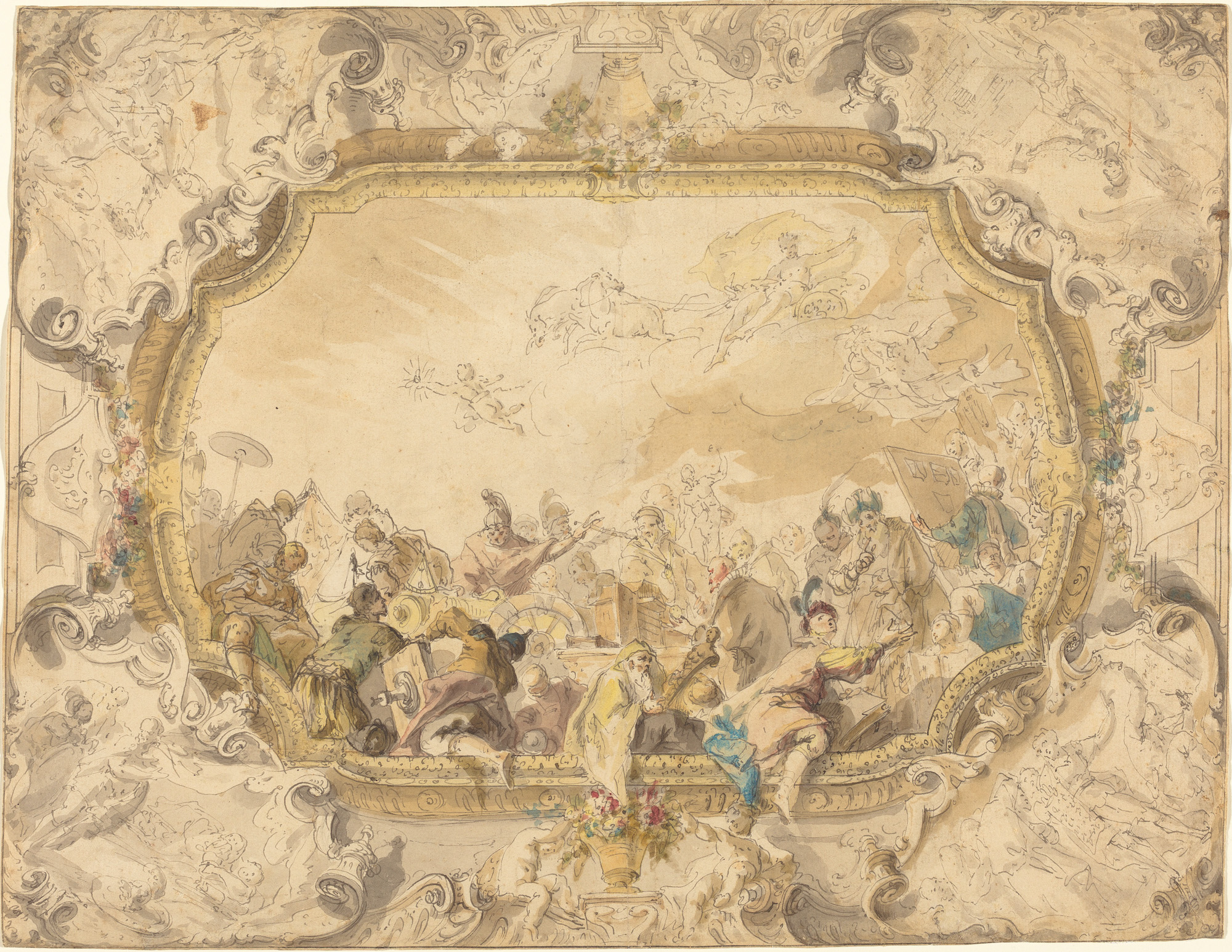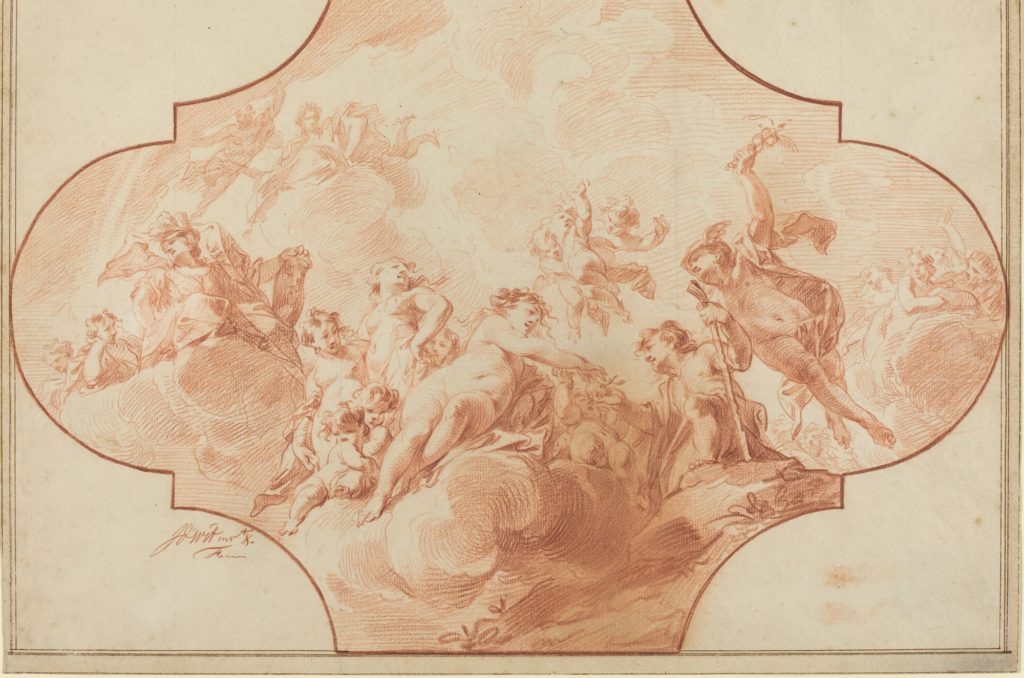In the January 1931 issue of The Criterion—T. S. Eliot’s magazine and The New Criterion’s namesake—the British biochemist and scholar Joseph Needham argued that human complexity is only truly understood when religious and scientific minds transcend the gulf that divides them. By itself, each mind cannot comprehend the other’s embrace of mystery and order, respectively; yet both of these are key to the human experience in the West. In that essay for The Criterion, “Religion and the Scientific Mind,” Needham echoes the idea that science may explain God’s work. He praises Leonardo da Vinci for having stood “almost alone in his time maintaining silently the right of science to be scientific.”
These minds do indeed transcend, however, in “Looking Up: Studies for Ceilings, 1550–1800,” currently on display at the National Gallery of Art in Washington, D.C.1 The exhibition’s thirty drawings of European ceilings feature heavenly motifs as well as examples ranging in style from the baroque to the neoclassical from artists such as Ferdinando Galli Bibiena (1657–1743), Anton Kern (1709–43), and Pietro Fancelli (1764–1840).

Although these renderings are in two dimensions, they do not fail to transport the viewer’s imagination into three-dimensional space. There is a sense of elevation, not only in picturing the height of the ceilings and biblical subject matter, but also in comprehending the artists’ talent and ability to capture wonder.
Bibiena’s Grand Illusionistic Ceiling (1720–40) maps the vertical thrust of the ceiling in such a manner that the viewer’s perspective of up and down becomes clouded. An initial glance at the chariot and angels on the seemingly distant ceiling gives the appearance that the pen-and-brown-ink drawing has a downward perspective. An examination of the architecture, however, shows the depth of the vaulted spaces in which statues stand, peering downward on imagined congregants looking up. That depth reveals an invitation to upward exaltation.
In Felice Giani’s Coffered Dome with Apollo and Phaeton (1787), gradual discoloration in the dome’s oval base produces a shading effect that gives the thumb-shaped drawing a three-dimensional quality. The technique lends to our imagining of how the rest of the structure appears—we are struck by both the aesthetic mystery and the marvel of the engineering.

Bibiena and Giani’s spatial methods in these drawings and throughout their careers point up the exhibition’s dual focus on architecture and interior design. This interplay between the mathematical and the artistic is key to overcoming the gulf between the scientific and religious minds. Great art that captures the complexity of the human condition and produces a sense of wonder bridges that gap.
A longing regret set in after I walked away from “Looking Up.” Exhibitions of contemporary art so often fail to produce that intangible sense of wonder. The mysteries of divine inspiration and human existence in the eyes of God do not readily appear in twenty-first-century art. Indeed, past generations of artists who embraced the mixing of religion and science attest to the monumental truth of the ideas that Needham discusses.
In his 2022 book, Celestial Aspirations: Classical Impulses in British Poetry and Art, Philip Hardie dedicates an entire chapter to “Visions of Apotheosis and Glory on Painted Ceilings,” which helps explain my reaction to the grandeur of “Looking Up.” Hardie, a fellow at Trinity College, Cambridge, argues that the figures’ upward and downward movements in the ceiling apotheoses communicate the artists’ visions of the relationship between man and God, which produce the aesthetic wonder that emanates from the works. On the Sheldonian Theatre, for example, Hardie writes that in Robert Streater’s ceiling Truth Descending on the Arts and Sciences, “the viewer’s eye is drawn upwards, past the circling enkuklios paideia [roughly, a circle of philosophers or learning] of the Arts and Sciences, and up into the sublime and vertiginous space of the opening heavens, as, for example, in the dome paintings of the assumption of the Virgin by Correggio and Lanfranco.”

Hardie also notes that seventeenth-century British poetry brought together science and religion to “praise” Isaac Newton’s discoveries, which are “enlisted as proof of a world created and guided by God.” “In this poetry, the mind or soul is constantly taking flight and soaring through the spaces of the newly revealed Newtonian universe,” Hardie writes, stating that the poets metaphorically express “the rational order of the Newtonian universe and the providential legitimacy of the constitutional monarchy” after the Glorious Revolution of 1688.
Needham writes: “It is evidently owing to these oppositions [between the religious and scientific minds] that we have the possibility of constructing character and personality.” The two-hundred-fifty-year time period covered in “Looking Up” saw new artistic movements assert competing articulations of beauty. In the exhibition, we see the rise and fall of baroque opulence as grandeur gave way to the comparative simplicity of neoclassical symmetry.
These oppositional movements of the baroque and neoclassical were equally political but still communicated comparable senses of wonder and complexity because they employ the scientific—the mathematical—to express the religious. Unlike much contemporary art today, the baroque and neoclassical art of the seventeenth and eighteenth centuries possess an excellence due to the intricate engagement of “these oppositions.”

